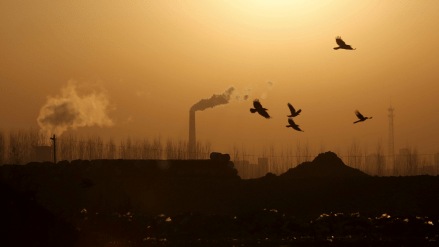By Anandajit Goswami
The 2024 Economic Survey has, for the first time, raised a valid concern about the prioritisation and attainment of India’s climate and development goals. Chapter 6 cited the work of Mike Hulme, professor of human geography, University of Cambridge, to state, “It is quite easy to imagine future worlds in which global temperature exceeds 2°C warming which is ‘better’ for human well-being, political stability, and ecological integrity, for example, than other worlds in which — by all means and at all costs — global temperature was stabilised at 1.5°C.”
The Survey, therefore, highlighted the point that prioritising only the temperature-bound climate goal of 1.5°C without balancing the development costs on low-income and developing countries might not be ethical when viewed from the lens of human well-being, political stability, and ecological integrity. This is particularly true while considering the work done by economist Richard Tol in 2024, who showed that the welfare-equivalent income loss due to a 2.5°C warming relative to pre-industrial times is always significantly higher for developing countries.
A focus on income, wealth, equity, and distribution goals is equally important for developing countries to create resilience to fight the adverse impacts of climate change. Hence, a blind focus on temperature goals can often be biased against aspects like equity and distributive justice of developing countries. Therefore, a non-aligned, non-holistic approach and focusing on climate action through the renewable energy (RE) transition can be detrimental to the development goals of developing countries. This is particularly true because any energy transition from one dominant fuel to another on a national, global, or local scale is inherently a protracted affair, as stated by scientist Vaclav Smil in 2014. It might take 50-60 years to materialise, with constant perseverance by generations. A transition from fossil fuels to RE is not an exception.
Moreover, often such transitions are fraught with conflicts, and knowingly and unknowingly might not be people-centric. A study by Sovacool et. al (2022), of which the author was also a part, shows that different actors, tactics, and outcomes are at play for the clean energy transition in seven carbon-intensive regions in Asia, Europe, and North America. Based on a data set of 130 case studies, the research shows how tactics (such as litigation or protest) impact outcomes (remuneration, policy change, concessions, or labour protections) for different fossil fuel to clean energy (like solar, wind, hydro, and nuclear) transitions. The study highlights the importance of actors and nudges by them in terms of tactics (like litigation, meetings, protests), and national and international institutional responses to national, supra-national, and global pressures impacting the fossil fuel to clean energy transition. The study, through a cultural, socio-technical, and comparative perspective based on the data of 130 case studies, proves that the goals of people-centric clean energy transition are often refracted through local, sub-national, and national institutions. They are catalysed through local mobilisations which either support or oppose the clean energy transition.
These findings further substantiate Smil’s 2014 work and strengthen the need to have strong social enablers and nudges for a clean energy transition in developing countries, which are generally time-consuming and can last for 50-60 years. However, while the countries move in such a time-consuming pathway, the wiser strategy can be to reduce energy and material consumption of countries with an equitable wealth and income distribution between the developed and developing countries as well as within developing countries. This, in a way can, in the long term, be useful to create ecological integrity, political stability, and equity for fighting the adverse impacts of climate change on poverty and development.
India’s Mission LiFE primarily focuses on such a clarion call through an ethical and moral lens, and it finds a mention in the 2024 Economic Survey. The global literature on reducing such a demand for energy and material consumption has already been outlined in “degrowth literature”. It mentions a steady state of economic growth by progressively reducing emission intensity, resource, and material consumption in the growth path. India has, on average, achieved an economic growth rate of 7-8%, with an emission growth rate of 4%. It is on track to become a country that can “degrow” while following its economic growth. However, the long-term success of such a path will only depend on social nudges, which can progressively reduce energy and material consumption in the production and demand cycle of the country. Once such strong nudges to facilitate ecologically friendly behaviour from both supply and demand sides are in place, India can attain its Viksit Bharat goal of 2047 while being a front runner in global climate action goals.
The author is independent research fellow, Ashoka Centre for a People-centric Energy Transition
Views are personal
